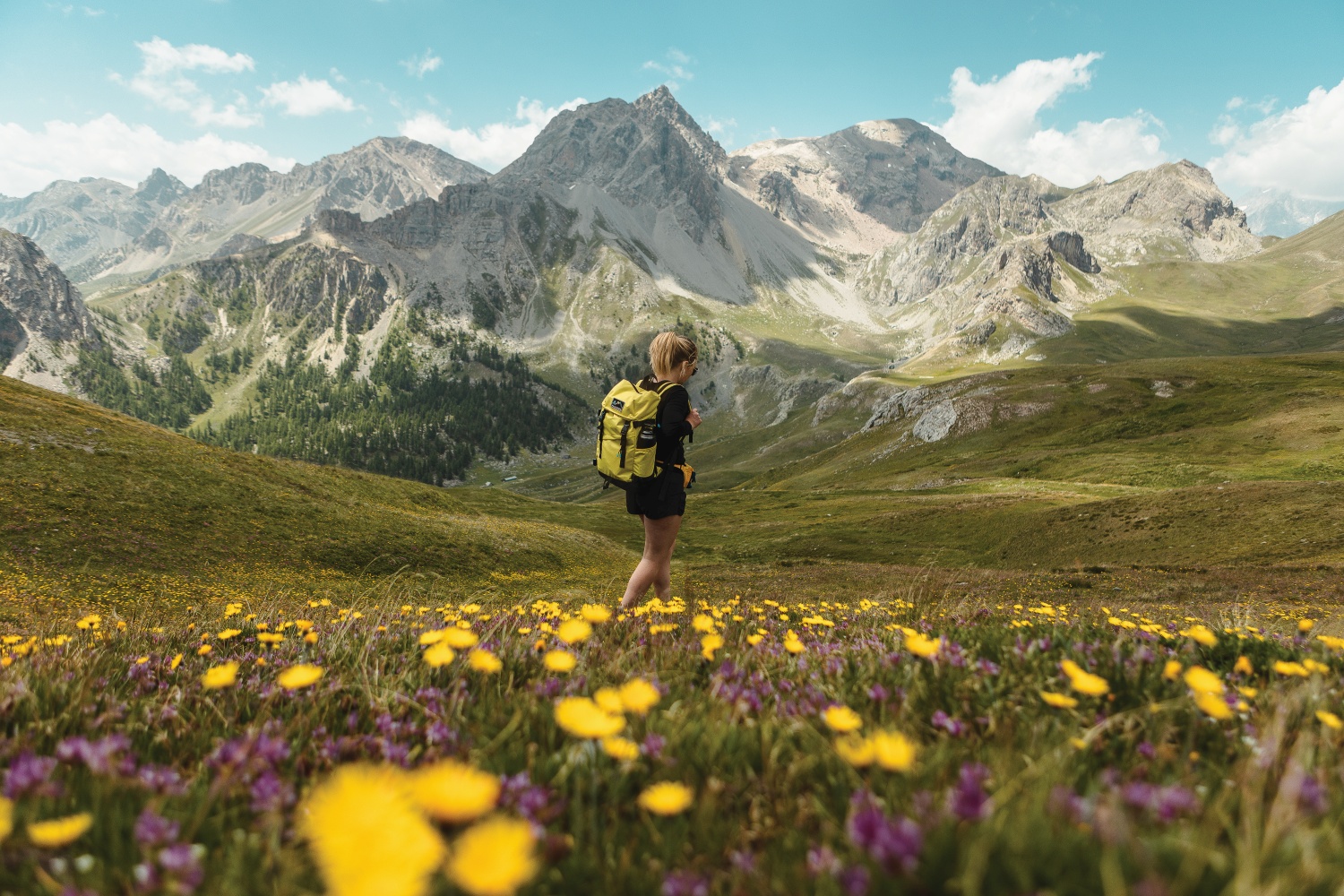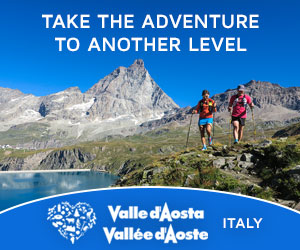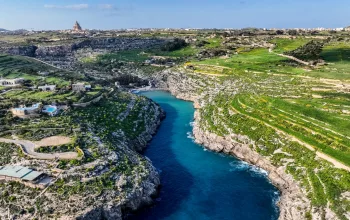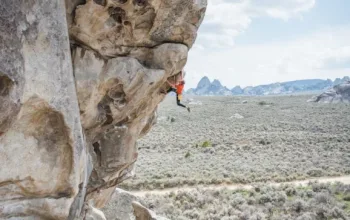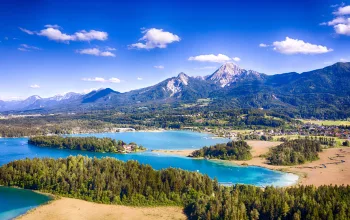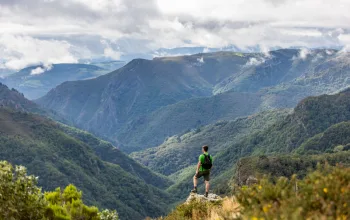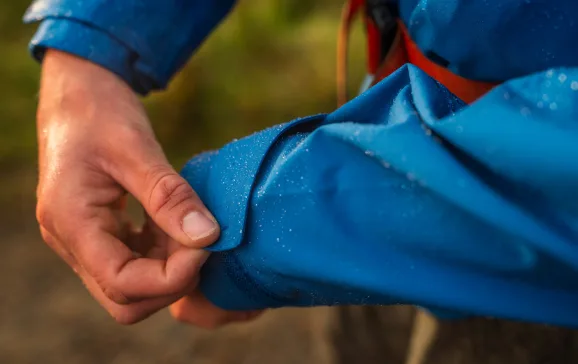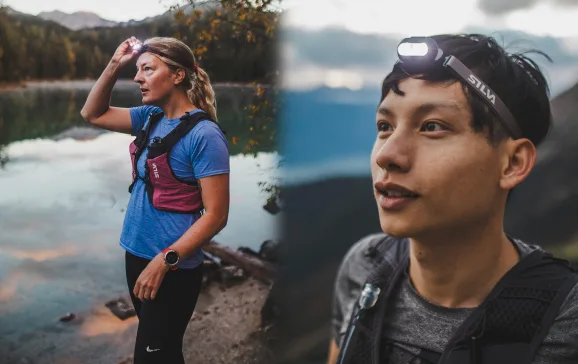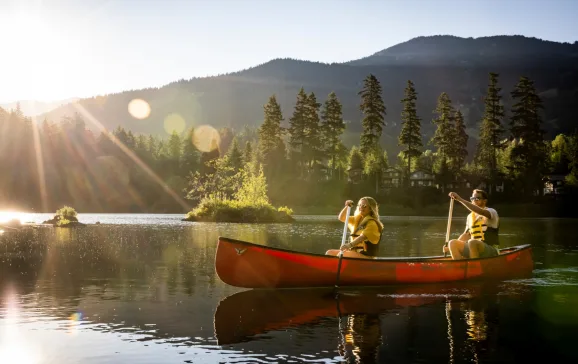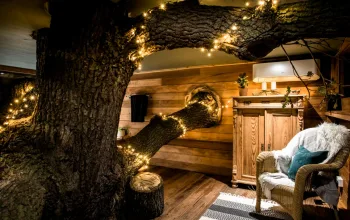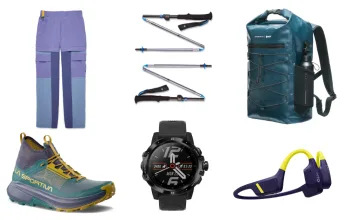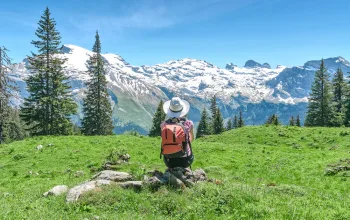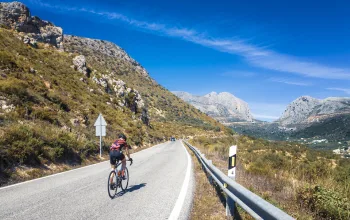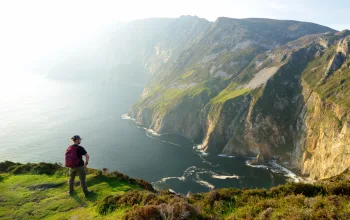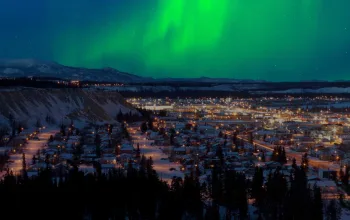Photography by Tom Young
One of the most fascinating things about moving close to the French Alps has been adapting my activities to the changing seasons. It feels a bit like learning to eat seasonally: skiing in the depths of winter, donning snowshoes as the snow becomes too mushy to ski, lacing up my hiking boots when it thaws. Suspended above the Serre Chevalier Valley in southeastern France, the landscape below looks a bit like a timelapse: spring flowers, a near cloudless sky, and in the distance, the still snow-covered Barre des Écrins (4,102m), refusing to leave winter behind, despite the late June heat.
I’m half-way up a via ferrata on a cliff face which soars up so steeply that it reminds me of Pride Rock. The last time I was in the Alps they were cloaked in snow, but now I feel as though I’m X-raying the mountains, the criss-crossing tracks of ski runs laid bare like bones. Tanks used to create artificial snow to be pumped out by cannons onto the pistes look like urban swimming pools.
Rivers snake like arteries through the valley, the harsh mountain peaks rise and fall like knots in a spine, and the rock face that we ourselves are climbing is scored with iron rungs, metal cables and crevasses that remind me of ribs.
It’s meadow-green, ochre, fuchsia and indigo. It bursts with colour in a way it never would during the winter. Through the middle, a cable car links the town of Chantemerle with the mountain slopes. Built in 1941, in the middle of World War Two, it’s the beating heart of the valley.
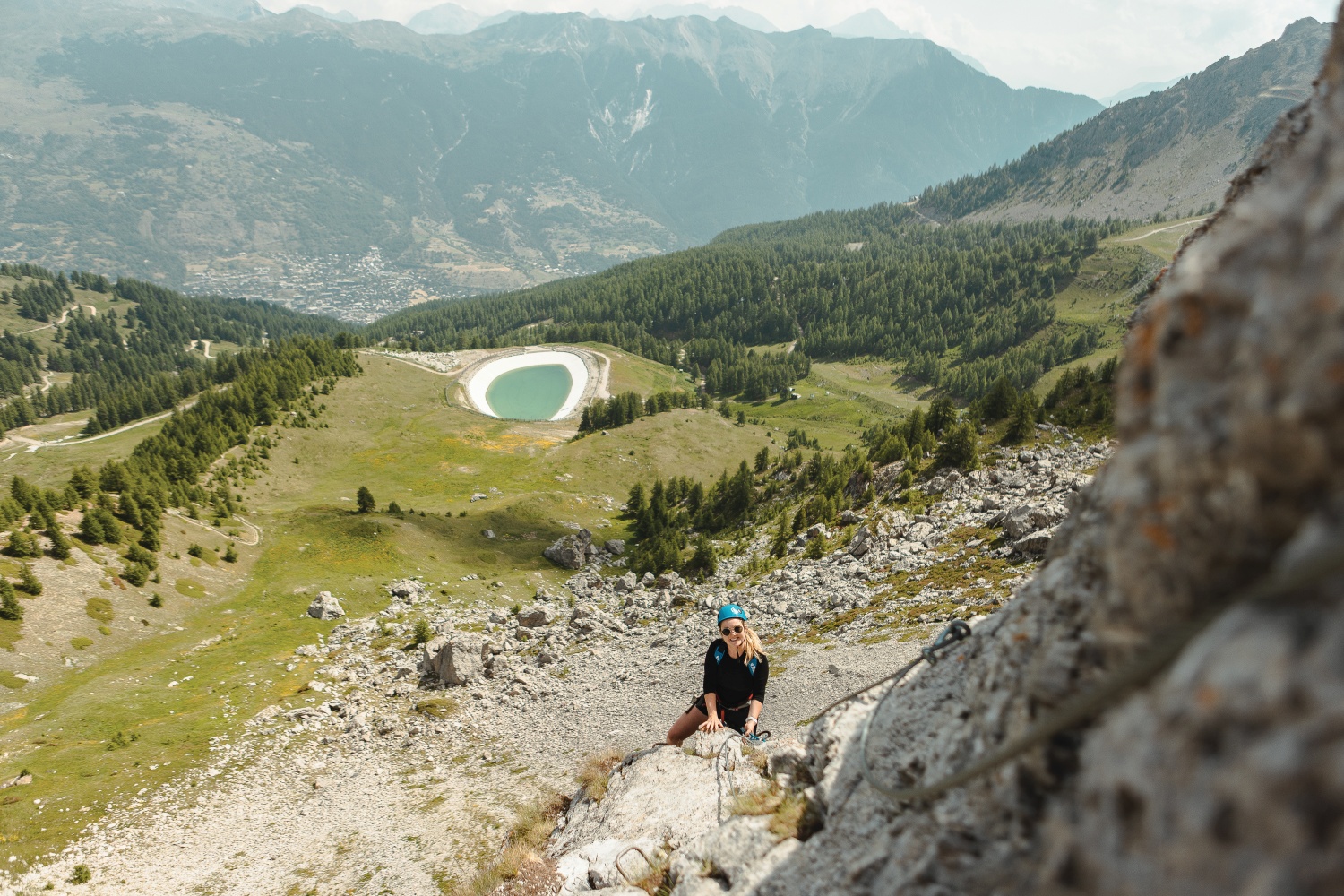
It’s the first via ferrata photographer Tom and I have ever been on, and the dramatic effect is heightened when our guide’s phone rings at a particularly precipitous moment, playing the James Bond theme tune. Weathered and jovial, Eric makes his living on the mountains year-round. He skis during the winter, and in the summer leads canyoning, climbing and paragliding tours. Today he has a pint-sized assistant, his daughter Ella, 11, (“almost 12”), perched marmot-like above us on the cliff face.
We clip and unclip from cable to cable, and I lean out and look down over the abyss we’ve ascended. Fortunately we don’t need to climb down again, there’s a zipline a few hundred metres away for that. Ella descends first without so much as a squeal as the zipline operator gives her a firm push from the platform at the count of “two” rather than “one”.

The GR54, or Tour des Écrins, which passes through the valley, is widely regarded to be one of the most spectacular “Grandes Randonnées” (GRs) in France. Without the luxury of time to spend 10 days traversing the Écrins on foot, we opt for a short plod to Lac de l’Oule at 2,525m, a round-trip of two hours. It’s untaxing but scenic, the lake itself mottled in aquamarine and deep blue, framed with rockfalls and steep, scree slopes. The lake is accessible through the Granon pass, which shot to fame this year for featuring in a Tour de France stage.
I knew that the area would be good for hiking, but I hadn’t anticipated the chocolate-box selection of other adrenaline-filled activities waiting for us.
“The GR54 is one of the most spectacular ‘Grandes Randonnees’ in France”
During the Second World War, Serre Chevalier sat in the Free Zone of France, which allowed work on the cable car to proceed unencumbered. The French Skiing Championships even took place here in 1942, 1943 and 1944. Now there are 250km of runs, but with the June sunshine freckling our faces, those aren’t what has drawn us here. The zipline whizzes over the chair lifts. Mountain bikes bounce over boulders. Paragliders spin in circles above us with their bird’s eye views.
There’s also whitewater rafting in Serre Chevalier — like no rafting trip I’ve done before. It’s a hybrid of immersion in nature, with pine trees towering around us, and urban exploration. We slide down dams, pass through weirs and travel under graffitied concrete bridges listening to the thunder of car tyres above. The start is deceptively tranquil, barely a ripple breaking the steady flow of the glacier-fed Guisane River. Our guide encourages us to have a swim to “cool off”. It has the desired effect: the water temperature is just eight degrees Celsius.
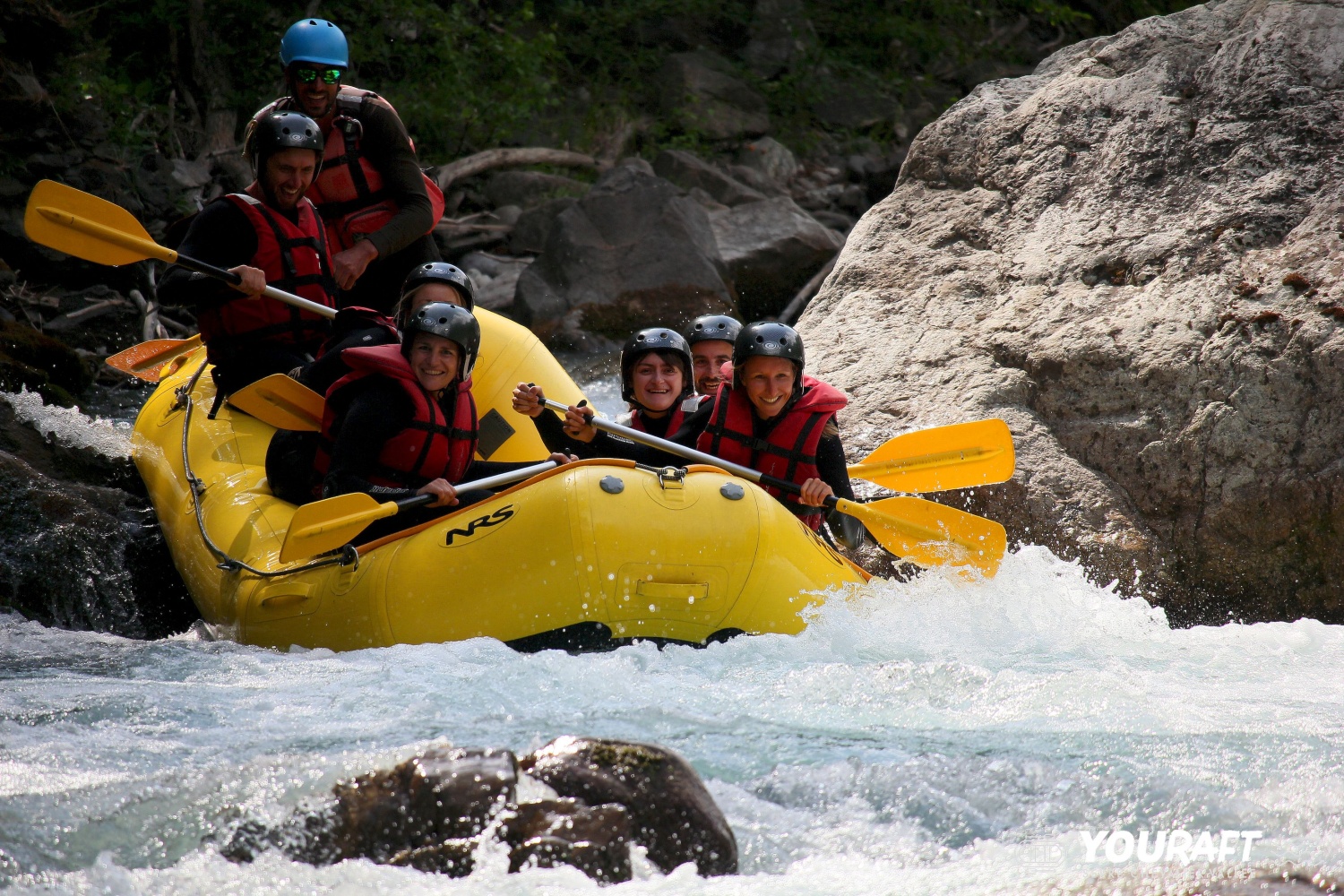
Further down, as things get rougher, the rafting guide treats our inflatable dinghy like a floating dodgem car. This isn’t about avoiding obstacles in the river, so much as turning them into a game. We ram into large, slick boulders, beaching ourselves and almost upturning the raft in the process. To get afloat again, a procedure like an undignified “legs, bums and tums” class is involved, and we bounce up and down on the raft to move it backwards off the rock.
- READ NEXT: The Best Kit for Travel Video and Photography
We’re all laughing, and our guide pretends to abandon ship. We make for the next rapids, known as the “James Bond” rapids, and I hum Eric’s ringtone in my head. One woman falls in and is fished out of the water in an equally undignified manner.
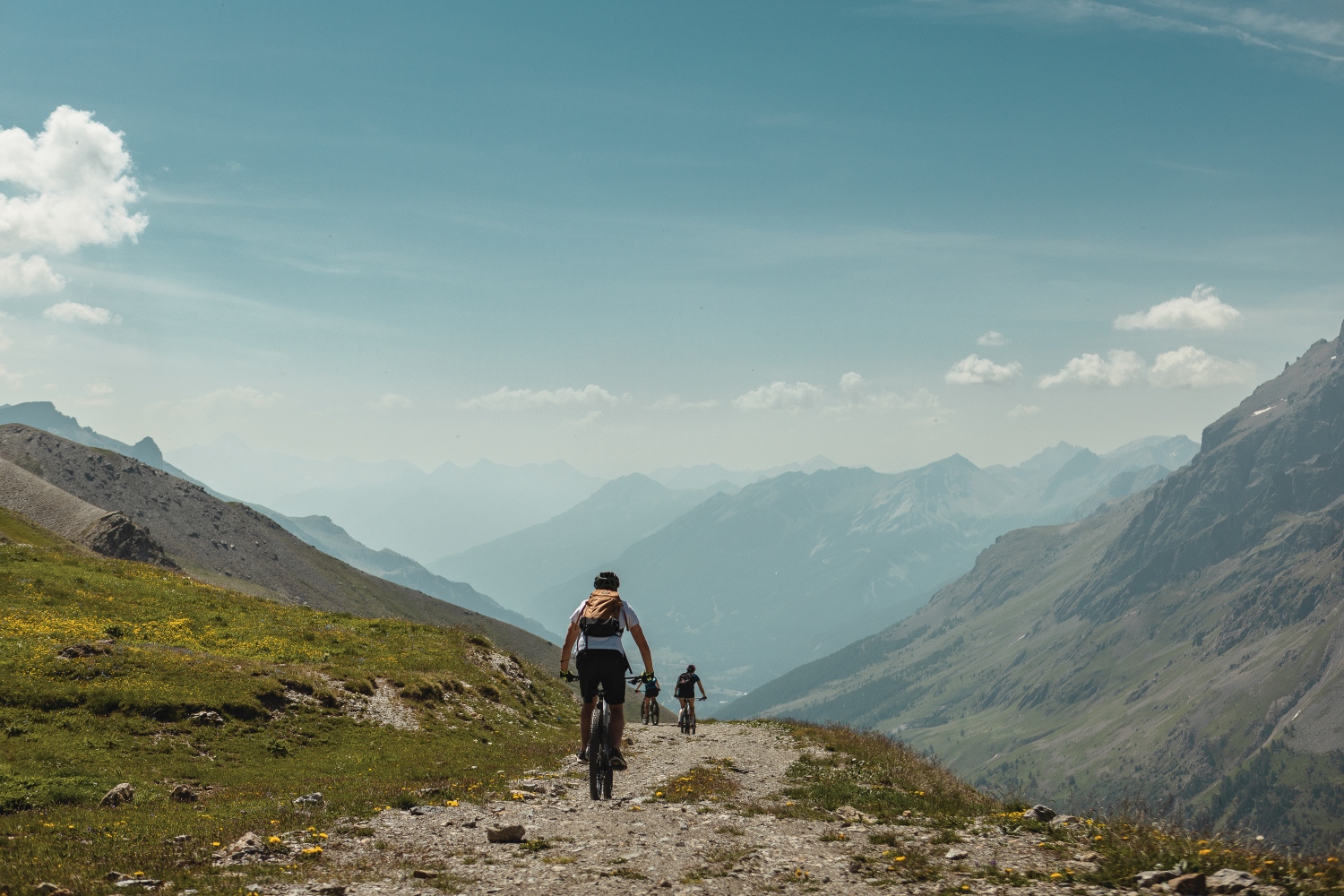
Going downhill fast
Back in Serre Chevalier, preparations for the Tour de France are in full swing. The Lycra brigade are out in force, a parade of padded derrières laboriously scaling the tarmacked road up to Col du Galibier (2,624m) in the heat, mimicking the route that competing cyclists will follow in a few weeks’ time. We’re fortunate to be heading downhill, 18kms on mountain bikes with suspension so good that I feel as though I’m on a pogo stick.
Tom flies fearlessly over boulders as we descend and I follow like a Bagatelle ball, bouncing inelegantly off every obstacle in my path. I’m more used to dodging traffic and pedestrians on my bike than boulders. We speed up to ford streams at a charge and snake our way in wide loops down the mountain. I almost take flight several times and I wish I’d padded my own derrière.
“Heat rises from the dusty tracks as we descend, along with puffs of white pollen”
Heat rises from the dusty tracks as we descend, along with puffy white pollen and flies that look like clouds of ash and snow. My smile is so wide that I have to remind myself to close my mouth so as not to inhale them.
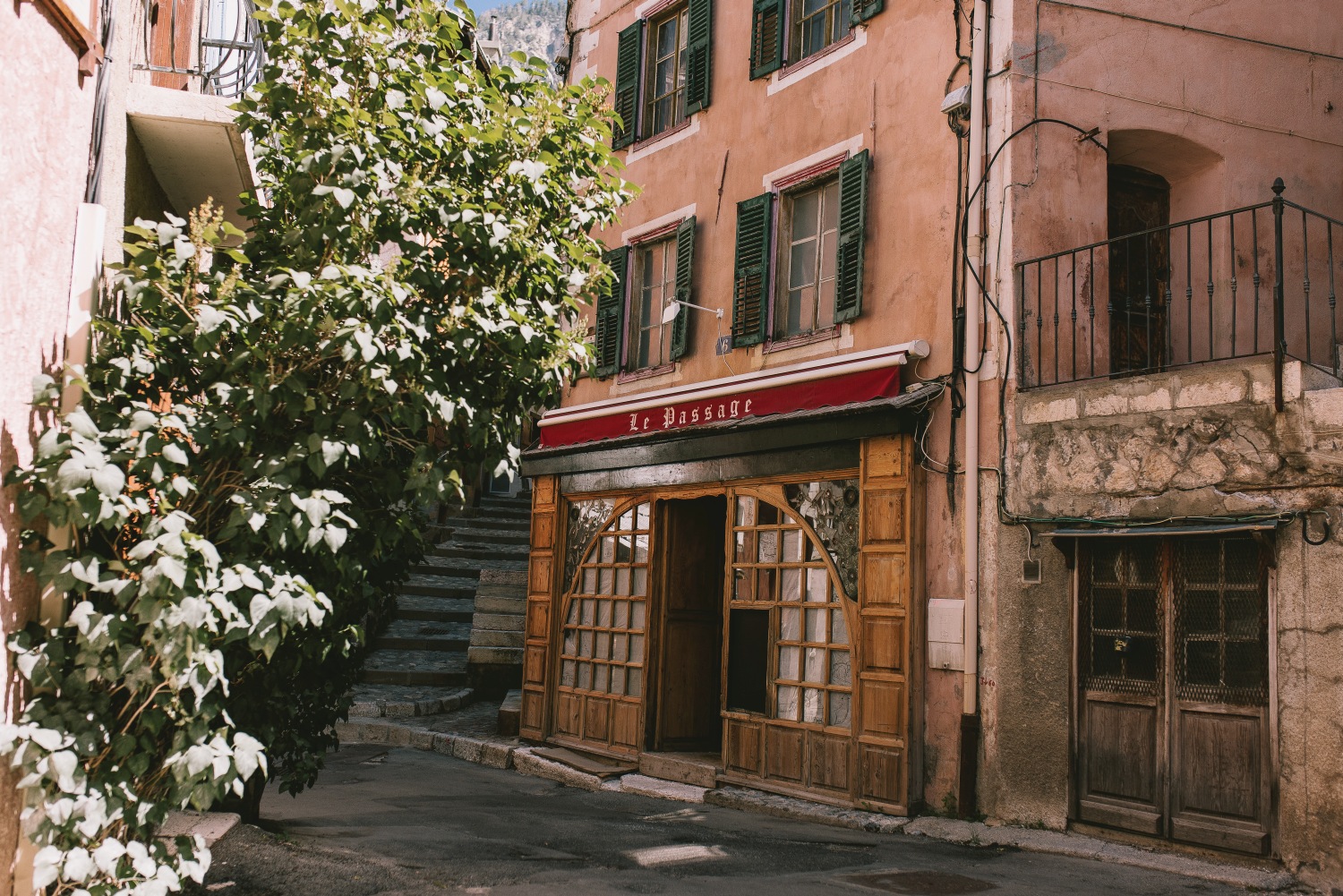
Invigorated, slightly sunburnt and with heart rates slowly returning to normal, we head to the fortified mediaeval town of Briançon. It’s a relief to finally shed the sticky helmets we’ve used for ziplining, mountain biking, rafting and climbing, and my head feels naked and carefree as we meander the cobbled streets of France’s “sunshine city”, the highest in the country. Briançon pays homage to its average 300 days of sun per year with shopfronts and cathedrals alike decorated with intricately designed sundials. There are 18 in the city alone, and over 400 in the Hautes Alpes.
Briançon dates back all the way to the beginning of the Middle Ages when construction began in the 5th century. However, a lot of changes were made between 1692 and 1723 by the great military engineer Sébastien Le Prestre de Vauban, who designed and built the six forts encircling the city and the iconic ramparts meant to deter invaders. It’s worked. Briançon still feels as though it belongs in the past, even though two fires during the 17th century destroyed many of the original buildings.
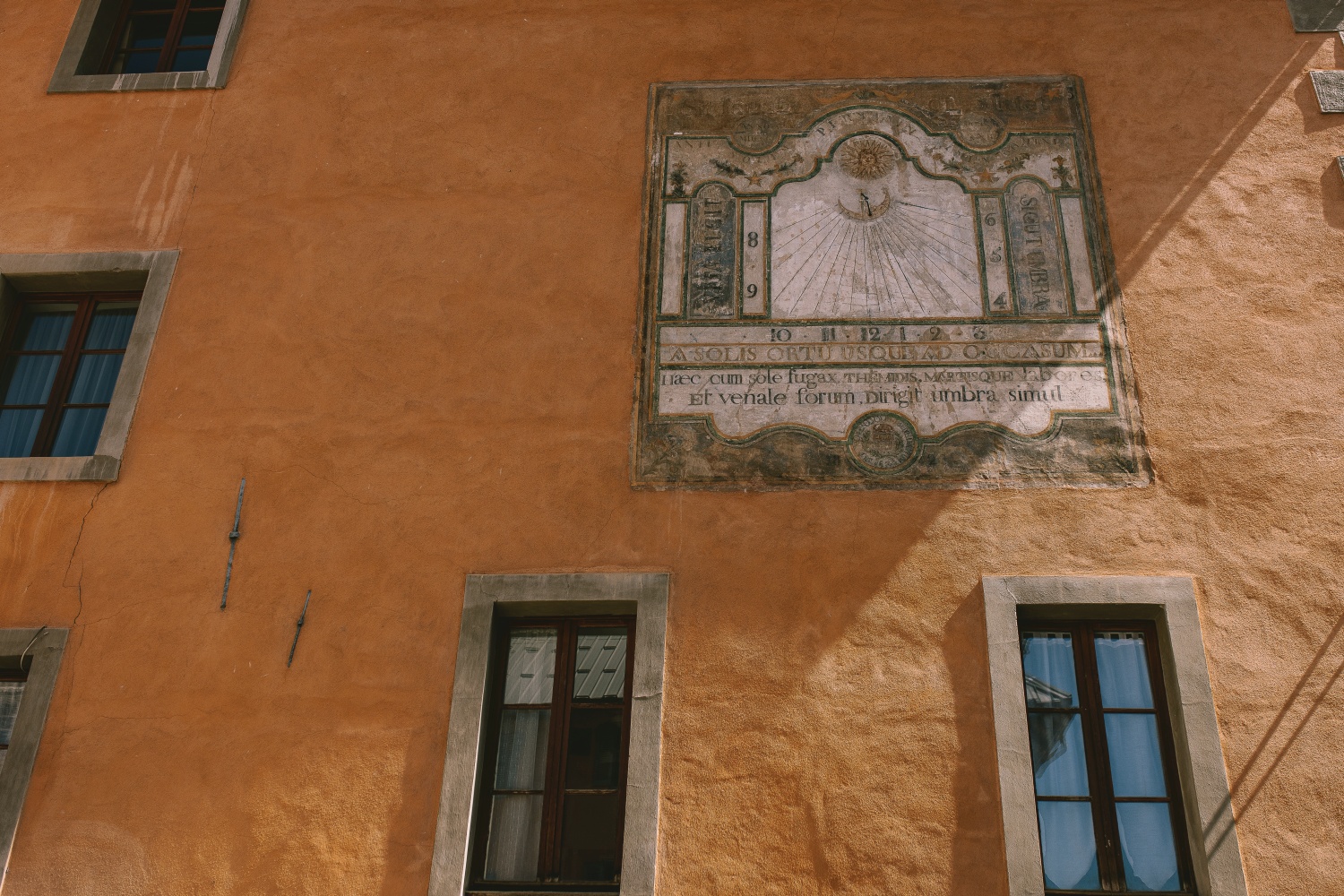
Old town, new tricks
Pastel-hued buildings jostle for space, a child and his dog play in the gutter, and a pair of marmalade cats bask in the sunshine next to the crumbling facade of the city’s oldest chapel, La Chapelle des Pénitents Noirs, dating from 1582. The ramparts are dominated by the spires of the church of Notre-Dame-et-Saint-Nicolas, built in the early 18th century and decorated with a large sundial. Le Pont d’Asfeld, a stone bridge that looks like the backdrop of a fantasy film, joins Briançon’s walled town to the cliffs on the other side of the River Durance.
Leaning over the edge I get a flutter of vertigo which I hadn’t experienced even when dangling from the via ferrata. The river below is so shallow that the exposed rocks look like knuckles and the rocky outcrops on the cliffs either side seem to be jostling to join together. “You can bungee jump from here,” says our guide, and I back away from the edge. It looks like I’ve found the limit of my comfort zone.
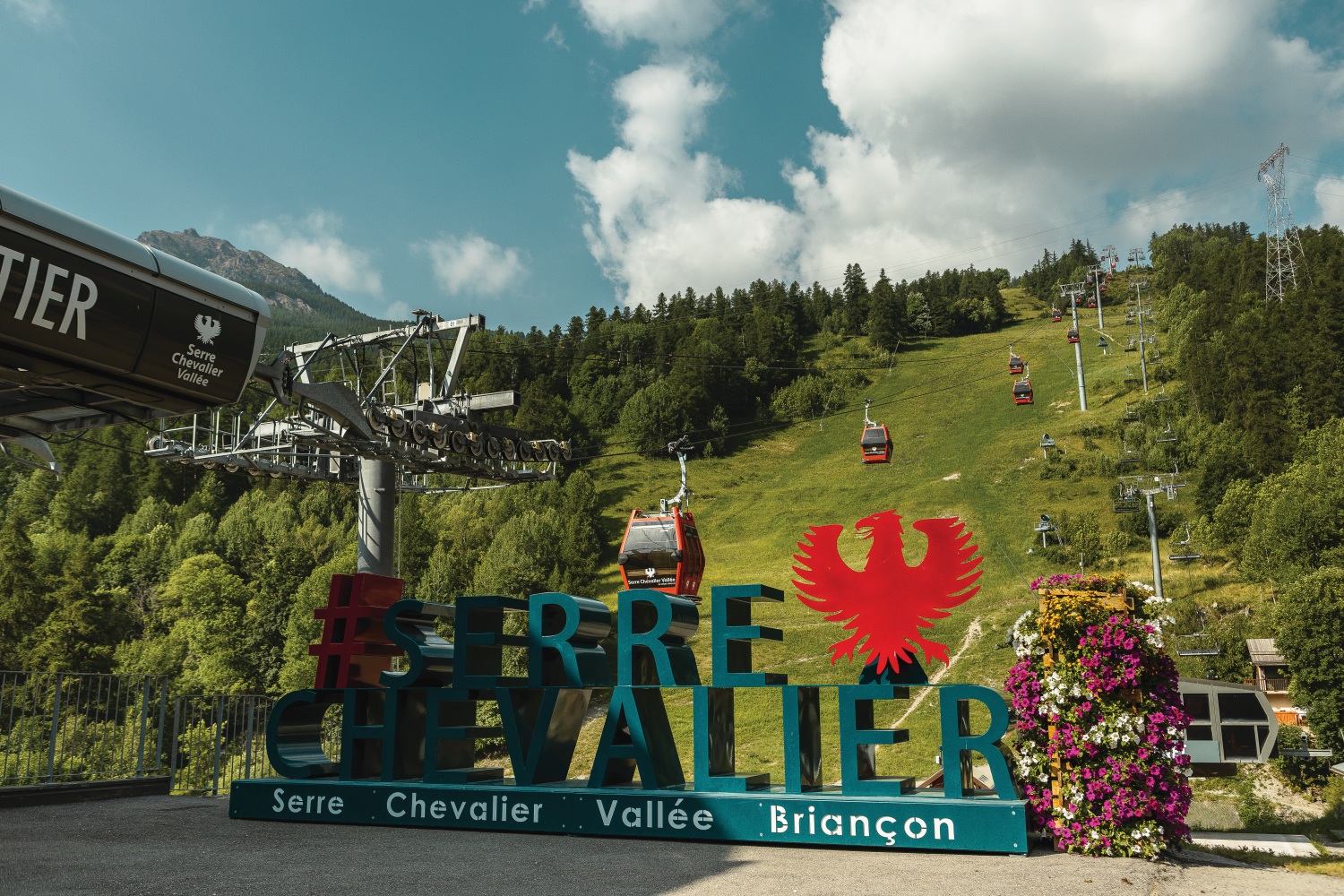
It might be steeped in history, but no-one can say that the area isn’t moving with the times. Wind turbines, hydroelectric turbines and photovoltaic panels produce at least 20 percent of the electricity used in the ski area. There’s an ambitious project underway to cut the carbon footprint of the ski area in half by 2030, and they’re on track to meet their initial milestone of a 30 percent reduction by next year.
I’m left with the impression that we’ve put the Serre Chevalier Valley under a microscope and analysed it from all angles. We’ve soared over it, pedalled through it, and paddled beneath it. We’ve been in the shadow of the mountains, and we’ve had them on our eyeline. It feels like Nature’s own theme park.
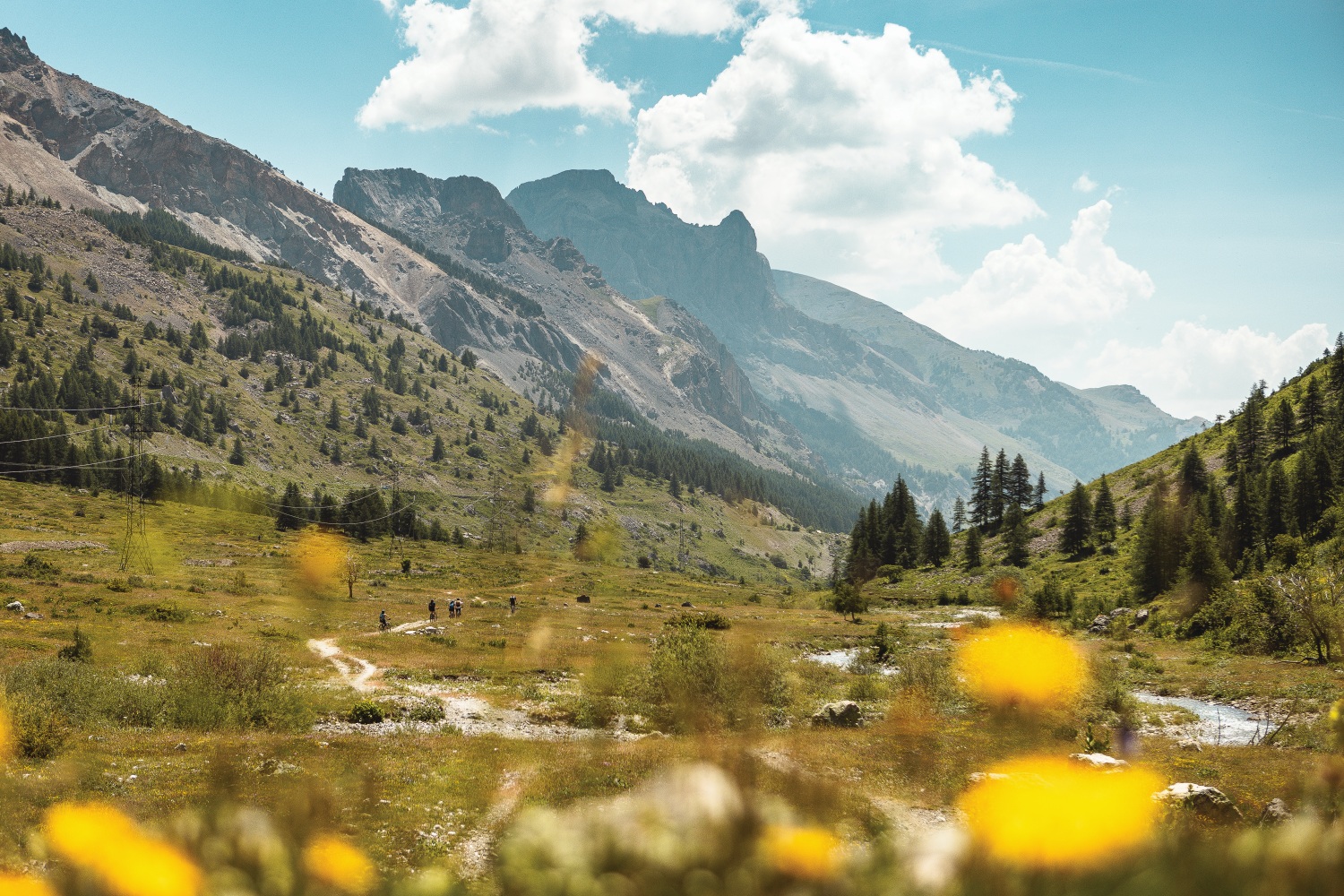
How to spend four days in Serre Chevalier
Day One
Head straight to the best views of the valley. Catch the cable car from Chantemerle to test out a via ferrata at the top of the mountains, before descending the fast way, via zipline. Spend the afternoon relaxing at the biological swimming lake at Saint-Chaffrey.
Day Two
Rise with the sun (you’ve got good odds that it will make an appearance here), and go hiking. Lac de l’Oule is an accessible, two hour round trip, but there are plenty of longer treks in the area too. Come back down into the valley to enjoy whitewater rafting during the afternoon.
Day Three
Explore the old town of Briançon, including Notre-Dame-et-Saint-Nicolas Church, the art galleries and boutique shops. Many shops are cash only and ATMs in the city charge a fee, so go prepared.
Day Four
Wave to the cameras, you’re doing (a small part of the) Tour de France. Ditch the road bike though, the terrain is crying out to be explored by MTB. Nurse aching joints and bruises at the thermal spa at Les Grands Bains du Monêtier.
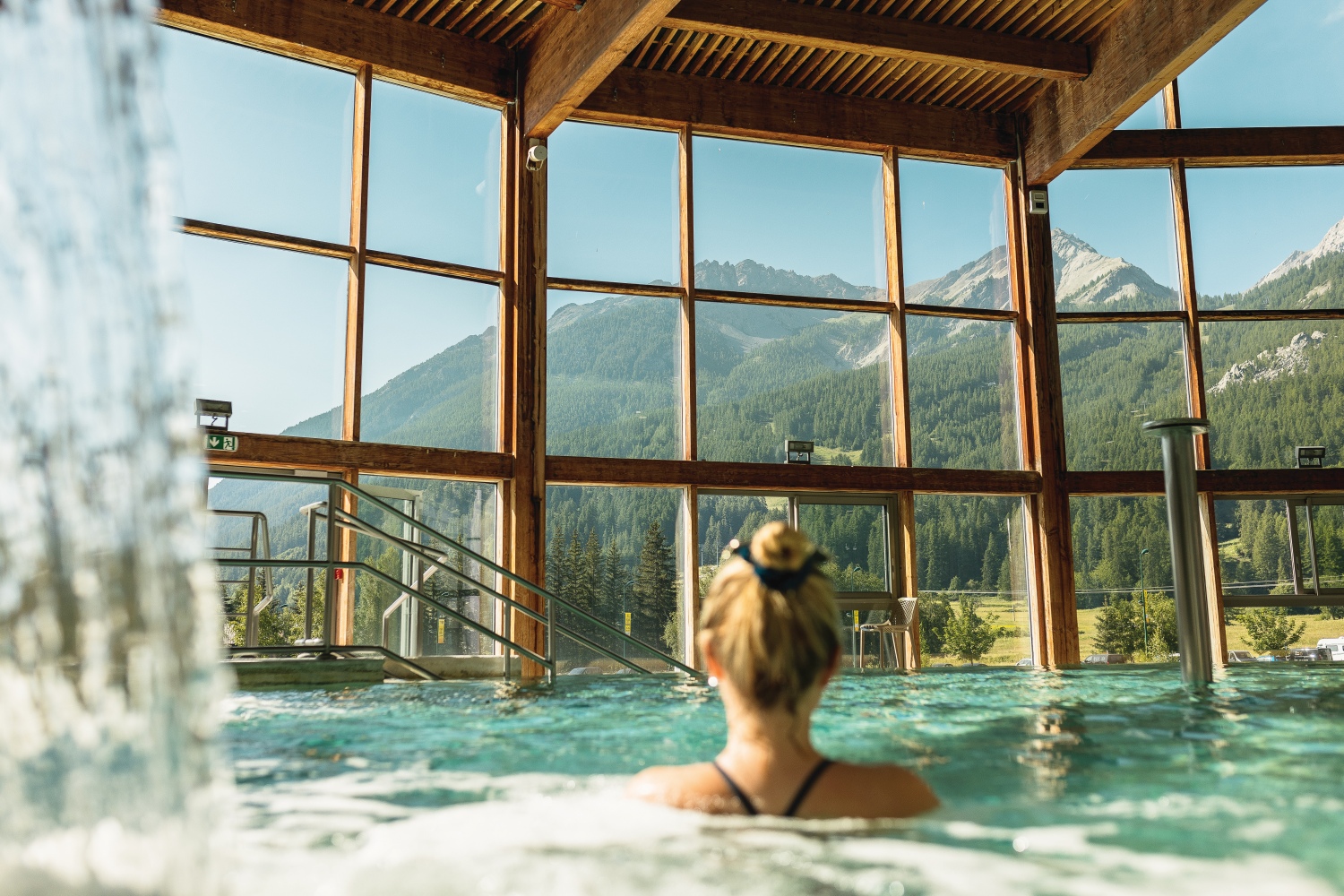
Knowhow
How to get there
Briançon is easy to reach without flying, which is in keeping with the efforts the valley is making to minimise their carbon footprint. Catch the Eurostar from London to Paris, from where a night train runs between Paris and Briançon taking just under 12 hours (faster trains run during the day).
The closest airports are Turin-Caselle (year round, 1 ½ hours), Alpes-Isère (Grenoble, winter only, 2 ½ hours), and Lyon-Saint Exupéry (year round, 3 hours).
Accommodation
We stayed at the 3* Hotel Vauban, in the heart of downtown Briançon which is within easy reach of Serre Chevalier and convenient for the plentiful bars, restaurants and shops in the town.
Our Hosts
The trip was arranged by our friends at the tourist office in Serre Chevalier. Find out more about their summer and winter offerings at serre-chevalier.com
- READ NEXT: The Best Lightweight Walking Boots



